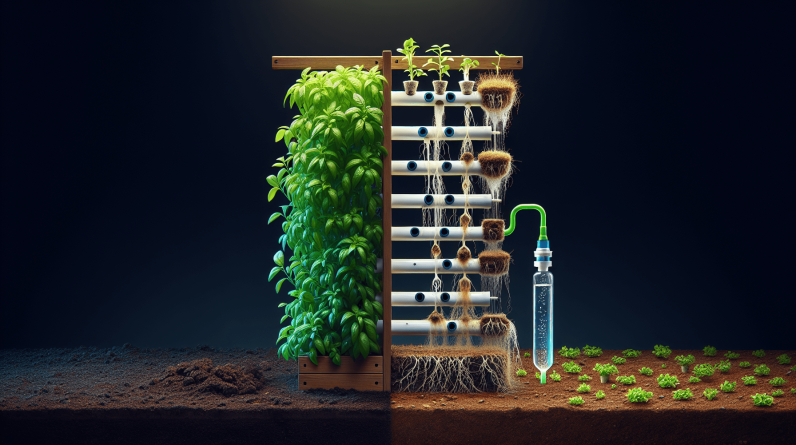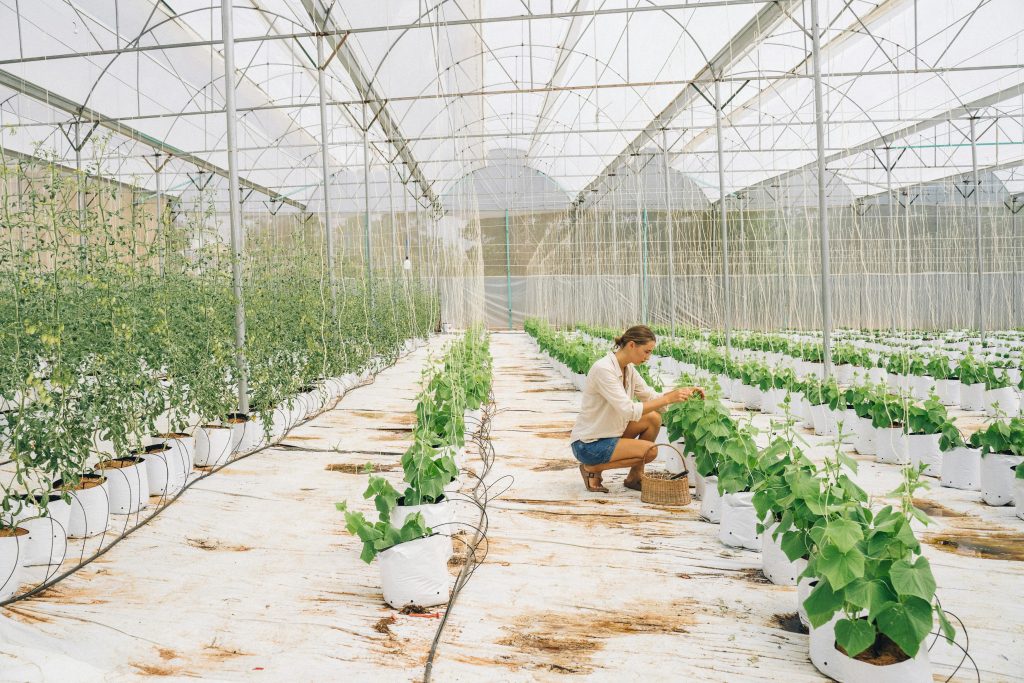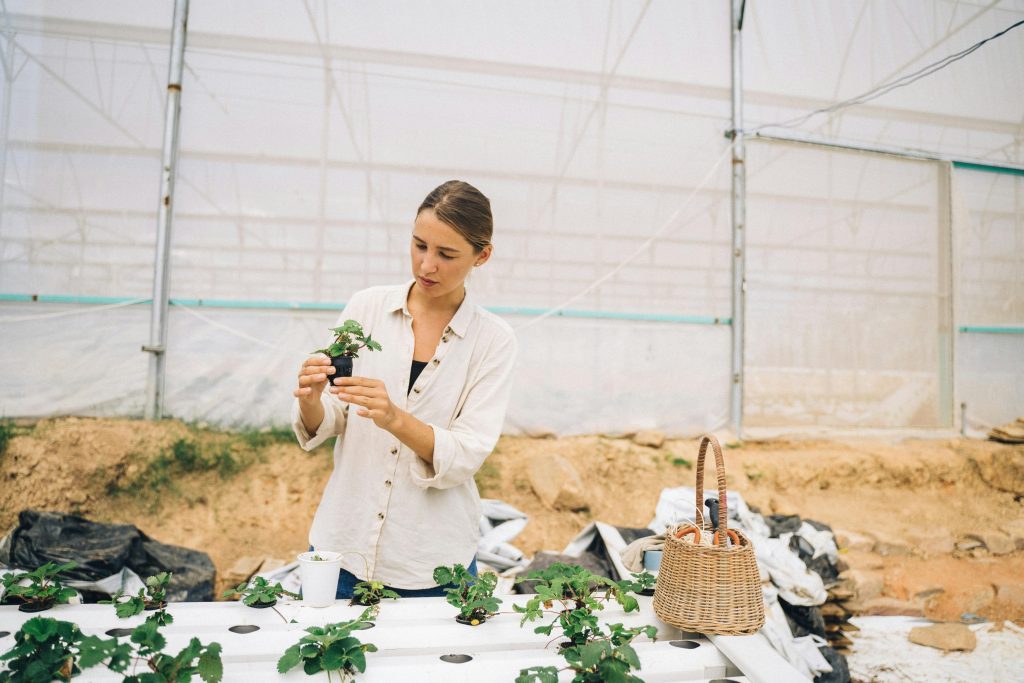
Is Hydroponic Gardening Right for You?
If you’re looking for a new and innovative way to grow plants, hydroponic systems might be just what you need. With their ability to provide plants with all the necessary nutrients without soil, these systems are becoming increasingly popular among gardeners. Before diving into hydroponic gardening, it’s essential to weigh the pros and cons to determine if it’s the right choice for you.
Advantages of Hydroponic Systems
Hydroponic systems offer several advantages that make them an attractive option for both experienced gardeners and beginners. Here are some of the pros to consider:
-
Faster Growth and Higher Yields: Plants grown in hydroponic systems tend to grow faster and produce higher yields compared to traditional soil gardening. This is because they have direct access to all the necessary nutrients, allowing them to thrive.
-
Conserves Water: Hydroponic systems use up to 90% less water than traditional soil gardening. This is because water is circulated in the system and reused, minimizing waste and helping the environment.
-
Year-Round Cultivation: One of the significant advantages of hydroponic systems is the ability to grow plants throughout the year regardless of external weather conditions. This means you can enjoy fresh produce even in the dead of winter.
-
Reduced Risk of Soil-Borne Diseases and Pests: Since hydroponic systems eliminate the need for soil, they also reduce the risk of soil-borne diseases and pests. This results in healthier plants that require fewer chemical inputs.
Disadvantages of Hydroponic Systems
While hydroponic gardening offers many benefits, there are also some drawbacks to consider before jumping in:
-
Initial Cost: Setting up a hydroponic system can be more expensive than traditional soil gardening. You’ll need to invest in equipment like grow lights, pumps, and nutrient solutions, which can add up quickly.
-
Maintenance: Hydroponic systems require regular monitoring and maintenance to ensure optimal plant growth. You’ll need to check nutrient levels, pH balance, and water circulation regularly to keep your plants healthy.
-
Technical Knowledge: Successfully growing plants in a hydroponic system requires some technical knowledge and understanding of the system’s components. If you’re new to gardening, there may be a learning curve involved.
-
Risk of System Failure: Hydroponic systems rely on technology to function properly, and there’s always a risk of system failure. Power outages, pump malfunctions, or nutrient imbalances can all lead to plant damage or loss.

Types of Hydroponic Systems
There are several different types of hydroponic systems available, each with its unique features and benefits. Depending on your space, budget, and gardening goals, you can choose the system that best suits your needs. Here are some common types of hydroponic systems to consider:
Nutrient Film Technique (NFT)
In an NFT system, plants are grown in channels or pipes through which a thin film of nutrient-rich water circulates. The roots of the plants are exposed to the water, allowing them to absorb nutrients directly. NFT systems are popular for their efficiency and water conservation.
Deep Water Culture (DWC)
DWC systems involve suspending plant roots in a nutrient solution that is continuously aerated to promote oxygen uptake. This type of system is simple to set up and ideal for growing leafy greens and herbs.
Ebb and Flow
Ebb and flow systems consist of a tray filled with growing medium where plants are grown. Periodically, the tray is flooded with nutrient solution and then drained, providing plants with water and nutrients. This type of system is versatile and suitable for a wide range of plants.
Aeroponics
Aeroponic systems use misters or nozzles to deliver nutrient-rich water directly to the roots of the plants. This method allows for maximum oxygen exposure to the roots, promoting fast growth and high yields. Aeroponics is considered one of the most efficient hydroponic systems available.
Drip System
Drip systems deliver a slow and steady drip of nutrient solution to the base of each plant, ensuring that they receive all the necessary nutrients. This type of system is versatile and can be customized to suit the needs of different plants.
Wick System
Wick systems are one of the simplest hydroponic systems, involving a nutrient solution reservoir and a wick that transports the solution to the plants. While wick systems are easy to set up, they may not be as efficient as other systems for larger plants or crops.
Comparison of Hydroponic Systems
To help you decide which type of hydroponic system is right for you, here’s a comparison of the pros and cons of each system:
| System Type | Advantages | Disadvantages |
|---|---|---|
| Nutrient Film Technique (NFT) | – Efficient water use | – Risk of oxygen depletion |
| Deep Water Culture (DWC) | – Simple setup and maintenance | – Requires frequent water monitoring |
| Ebb and Flow | – Versatile for various plants | – Potential for mold and algae growth |
| Aeroponics | – Fast growth and high yields | – Requires technical knowledge |
| Drip System | – Customizable nutrient delivery | – Drip emitters may clog easily |
| Wick System | – Easy to set up and low cost | – Less efficient for larger plants |
Setting Up Your Hydroponic System
If you’ve decided to give hydroponic gardening a try, setting up your system correctly is crucial for the success of your plants. Here are some steps to follow when setting up your hydroponic system:
-
Choose Your System: Select the type of hydroponic system that best fits your space, budget, and gardening goals. Consider factors like the types of plants you want to grow and the level of technical know-how required for each system.
-
Gather Necessary Equipment: Depending on the system you choose, you’ll need equipment like grow lights, pumps, nutrients, pH testing kits, and growing mediums. Make sure you have everything you need before starting.
-
Prepare Your Growing Area: Set up your hydroponic system in a well-lit area with access to electricity and water. Make sure the space is clean and free of contaminants that may harm your plants.
-
Install Your System: Follow the manufacturer’s instructions to set up your hydroponic system correctly. Pay attention to details like water circulation, nutrient levels, and pH balance to ensure optimal plant growth.
-
Plant Your Crops: Once your system is set up, it’s time to plant your crops. Follow the recommended planting instructions for each type of plant you’re growing and monitor their progress regularly.
-
Monitor and Maintain: Regularly check nutrient levels, pH balance, and water circulation to keep your plants healthy. Make adjustments as needed to ensure optimal growth and productivity.
By following these steps and staying on top of maintenance, you can enjoy the benefits of hydroponic gardening and grow fresh, nutritious produce right in your own home.

Conclusion
Hydroponic systems offer a sustainable and efficient way to grow plants without soil, providing numerous benefits for gardeners. From faster growth and higher yields to reduced water usage and year-round cultivation, hydroponics is revolutionizing the way we grow fresh produce. While there are some drawbacks to consider, the advantages of hydroponic systems far outweigh the disadvantages for many gardeners.
Whether you’re a seasoned gardener looking for a new challenge or a beginner interested in trying something different, hydroponic gardening has something to offer everyone. With the right setup, knowledge, and maintenance, you can enjoy the rewards of growing your plants in a controlled and nutrient-rich environment. So, why not give hydroponic gardening a try and see the incredible results for yourself?










